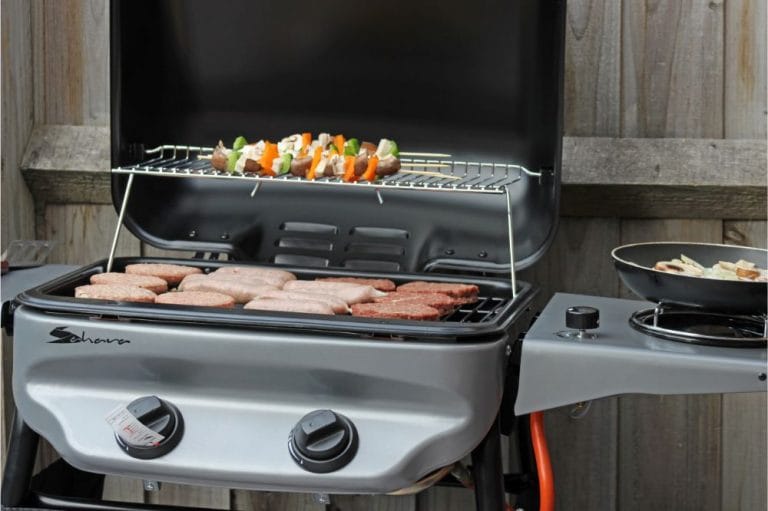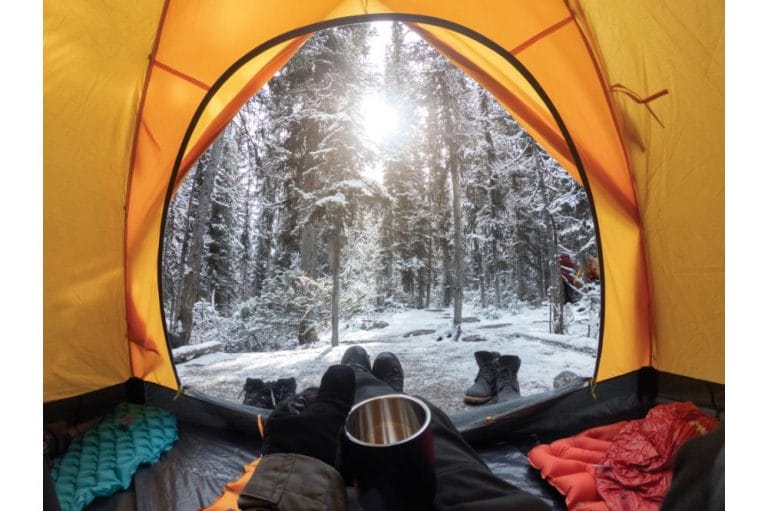🐾 Camping with Pets in the Summer: Essential Safety Tips You Need to Know
Camping with your pets can turn an ordinary trip into an unforgettable adventure — few things beat watching your dog explore a trail or nap beside the fire. But summer heat, rough terrain, and wildlife can challenge even the most prepared owners.
This post contains affiliate links. I may earn a small commission at no extra cost to you. Learn more.
This guide is part of our Ultimate Camping Guide — your resource for smarter, safer outdoor adventures. Here, you’ll learn how to keep your furry companions safe, cool, and comfortable on every summer camping trip.
Before you hit the road, make sure you’ve packed everything your pet will need by reviewing our Ultimate Camping Packing Checklist.
✅ 1. Prepare Your Pet for the Outdoors
- Health Checkup: Visit your veterinarian for a complete health assessment and ensure vaccinations are up to date. Discuss the best preventive care based on your destination.
- Parasite Prevention: Use veterinarian-recommended flea, tick, and heartworm prevention products. Regularly inspect your pet for ticks, especially in wooded areas.
- Conditioning: Gradually increase outdoor activities to prepare your pet physically for camping.
-
Gear Familiarization: Let your pet get used to camping gear like collars, boots, or cooling vests at home before the trip.
Recommended: Seresto Flea and Tick Collar
💧 2. Hydration is Vital
- Fresh Water Supply: Always carry ample fresh water and encourage frequent drinking breaks. Don’t rely on natural water sources unless properly filtered.
- Portable Water Bowl: A lightweight, collapsible bowl is essential for easy hydration.
- Watch for Signs of Dehydration: Lethargy, dry nose, sunken eyes, and loss of appetite indicate immediate hydration needs.
- Ice Packs & Cooling Treats: Use ice in water bowls or pack pet-safe frozen treats to keep your pet cool and hydrated.
Recommended: Outward Hound Portable Dog Bowl
☀️ 3. Avoid Heatstroke
- Recognizing Symptoms: Excessive panting, drooling, lethargy, vomiting, collapse.
- Preventive Measures: Schedule outdoor activities during cooler morning or evening hours and provide shaded rest areas.
- Emergency Response: If heatstroke occurs, move your pet to a cooler area immediately, apply cool water to the body, and contact a veterinarian urgently.
- Cooling Accessories: Use cooling vests or bandanas to help regulate your pet’s temperature.
- Know Your Breed: Brachycephalic (short-nosed) breeds like bulldogs or pugs are more prone to overheating.
🐾 4. Protect Those Paws
- Hot Surfaces: Check surfaces with your hand before allowing pets to walk. If it’s uncomfortable for you, it’s harmful to your pet.
- Paw Protection: Protective booties can shield paws from heat, sharp objects, and rough terrains.
- Routine Checks: Regularly inspect paws for cuts, burns, or irritations. Carry balm or ointment to soothe dry or cracked pads.
- Rest Stops: Allow your dog to walk on shaded trails, grassy areas, or use a towel as a rest mat.
Recommended: QUMY Dog Boots Waterproof Shoes
🌳 5. Provide Shade and Cooling Areas
- Natural and Artificial Shade: Set up campsites under natural shade or bring portable canopies and shade tents.
- Cooling Techniques: Cooling mats or damp towels provide relief from excessive heat. You can also use battery-operated fans.
- Shade Placement: Keep your pet’s bed, food, and water bowls in shaded areas to avoid overheating.
Recommended: Arf Pets Pet Dog Self Cooling Mat
🌙 6. Safe Sleeping Arrangements
- Comfortable Bedding: Pack an insulated, portable pet bed.
- Secure Sleeping Area: Keep your pet safely inside the tent or in a secure crate nearby to avoid nocturnal wildlife encounters.
- Nighttime Temperatures: Bring an extra blanket if temperatures drop. Pets can be just as sensitive to cold as heat.
- Mosquito Protection: Use netting or keep your tent sealed to prevent bug bites during the night.
- Familiar Items: Bring your pet’s favorite toy or blanket to help them feel more secure in a new environment.
🏷️ 7. Pet Identification
- Visible IDs: Always use collars with updated identification tags, including your current phone number.
- Microchip: A microchip offers permanent identification and increases the likelihood of reunion if lost.
- GPS Trackers: Consider GPS-enabled collars for added safety during hikes or off-leash moments.
🦝 8. Be Aware of Wildlife
- Supervision and Leashing: Keep pets leashed at all times to prevent chasing wildlife.
- Food Storage: Secure pet and human food in airtight containers to avoid attracting wildlife.
- Wildlife Encounters: Educate yourself on local wildlife and potential risks to ensure swift, appropriate reactions.
- Avoid Dusk/Dawn Hikes: Many wild animals are most active during these hours.
🩹 9. First Aid Kit for Pets
-
Your pet-specific kit should include:
- Bandages
- Antiseptic wipes
- Tweezers for tick removal
- Pet-safe wound spray
- Gauze pads
- Pet thermometer
- Veterinarian emergency numbers
- Bonus Tip: Include a printed guide on basic pet first aid procedures in your kit.
🎓 10. Train Your Pet for Camping
- Essential Commands: Reinforce basic commands like “come,” “stay,” and “leave it.”
- Desensitization: Introduce your pet gradually to the sounds and smells associated with camping, including tents and campfires.
- Practice Runs: Try a backyard campout or day hike before your full trip to see how your pet adjusts.
🍽️ 11. Maintain a Balanced Diet
- Consistency: Stick to your pet’s regular diet to prevent digestive upsets.
- Food Storage: Keep food in airtight, waterproof containers to maintain freshness and safety from pests.
- Treats and Supplements: Bring healthy, nutritious treats and supplements to maintain energy levels.
- Feeding Schedule: Keep a consistent feeding routine to reduce anxiety.
🚯 12. Respect Camping Etiquette
- Clean Up: Always promptly clean up pet waste.
- Noise Management: Keep your pet calm and avoid unnecessary noise, especially at night or in shared campgrounds.
- Leash Rules: Follow leash laws and campsite-specific regulations to avoid fines or ejection.
⚠️ 13. Common Mistakes to Avoid
- Ignoring Signs of Distress: Monitor your pet closely for any unusual behaviors or health symptoms.
- Overexertion: Avoid strenuous activities during peak heat hours.
- Neglecting Local Regulations: Always check campsite rules and pet restrictions beforehand.
- Forgetting Essentials: Bring backups—extra leashes, food, and medical supplies in case of unexpected delays.
🗺️ 14. Selecting a Pet-Friendly Campsite
-
- Research sites beforehand to confirm pet-friendly policies.
- Check for amenities beneficial to pets, like dog parks, trails, and water stations.
- Visit websites like BringFido for comprehensive pet-friendly travel guides.
- Read reviews from other pet owners to understand what to expect.
🚗 15. Safe Traveling
- Secure pets during transportation with seat harnesses or travel crates.
- Schedule frequent breaks to allow pets to stretch, relieve themselves, and hydrate.
🐕🦺 16. Special Considerations for Older
- Older pets require more frequent rest breaks and comfortable bedding.
- Consult with your veterinarian regarding any special medications or treatments necessary during your trip.
- Avoid rough trails or extreme temperatures if your pet has joint or respiratory issues.
- Carry a harness or pet carrier for senior pets with mobility challenges.
Before wrapping up, check out our Ultimate Camping Guide — it’s packed with systems, gear tips, and strategies to make every summer trip with your pets safe and stress-free.
🌟 Conclusion
Camping with pets adds a whole new layer of joy to your summer adventures. With the right preparation — plenty of water, heat protection, paw care, and emergency planning — you’ll keep your four-legged companion safe, comfortable, and ready for every trail ahead. A little foresight means more fun, fewer worries, and unforgettable moments shared outdoors.
🐶 Happy Camping!
Further Reading:
🏕️ The Ultimate Camping Guide
🧳 What to Pack for Camping
🏞️ The Ultimate Hiking Checklist
🧰 How to Organize Camping Gear
👨👩👧 Family-Friendly Camping Checklist
🧓 Ultralight Camping Gear for Seniors
🌲 11 Hammock Camping Tips
⚙️ High-Performance Camping Gear
🎒 Best Survival Kits for Beginners
🧼 DIY Off-Grid Shower Setups
Affiliate Disclosure: This post contains affiliate links. If you purchase through them, I may earn a small commission at no extra cost to you. I only recommend gear I personally use or trust to add real value to your adventures.







